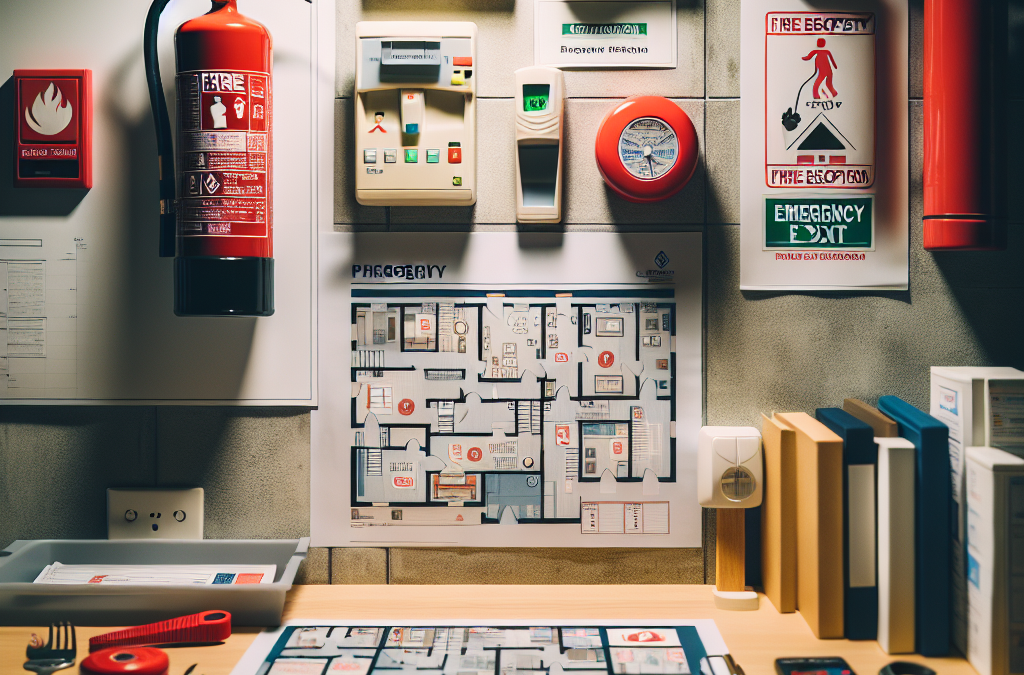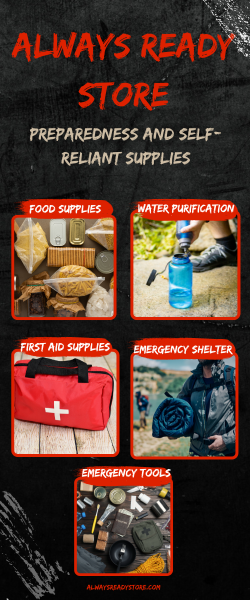Understanding Fire Hazards
Types of Fires
When I first started learning about fire safety, I didn’t realize there were different types of fires. Of course, I knew about destructive house fires, but did you know that there are actually five classes of fire? Each type has a different cause and requires a specific method of extinguishment. It’s pretty fascinating!
For instance, Class A fires involve ordinary combustible materials like wood, paper, or cloth. These are your standard household fires. Class B fires are fueled by flammable liquids such as gasoline and oil, which are a little trickier because you can’t just throw water on them. Similarly, Class C fires involve electrical equipment and require a different approach.
Understanding these distinctions can save your life. Each fire class needs a specific approach for prevention and extinguishment, which is essential to know when preparing for potential emergencies.
Identifying Risks in Your Environment
Now that you know the types of fires, it’s time to identify risks around your home or workplace. I like to walk around my house with a critical eye. Are there any overloaded power cords? Flammable materials stored too close to heat sources? This is where your detective skills come into play!
Keep a notebook and jot down any potential hazards you find. Once you have this list, prioritize what needs to be addressed immediately. It could be as simple as relocating a can of paint or getting rid of that old rag stuffed in the corner of the garage.
Regularly reviewing your environment means you’ll stay ahead of the game. Making fire safety a part of your routine can go a long way in preventing emergencies before they happen.
Thank you for reading this post, don't forget to subscribe NOW for FREE!
Fire Safety Equipment
Ever heard the saying “better safe than sorry”? Well, when it comes to fire safety equipment, this couldn’t be more true. I always make sure I have the essentials around. A good fire extinguisher is like having a trusty sidekick at home. Just be sure it’s rated for the types of fires you might encounter!
Another vital piece of equipment is smoke alarms. I can’t stress enough how crucial these are. Place them in every sleeping area and check the batteries at least twice a year. You can never be too careful, and these devices are your first line of defense.
And let’s not forget about fire blankets! These can smother small fires before they spiral out of control. They also can be a lifesaver if someone’s clothing catches fire. Don’t wait for a fire to happen to think about these essentials—be proactive!
Creating an Emergency Plan
Developing a Fire Escape Plan
One of the most empowering things I’ve done is create a fire escape plan for my home. It’s not just for the kids or elderly members—everyone needs to know what to do in case of a fire. I suggest gathering everyone together to draw out an escape route. Make sure there are at least two ways to exit every room.
Rehearsing this plan is critical. We practice it every six months, and it’s essential to teach kids to stay low and crawl under smoke! Practicing can really help calm nerves in a real emergency.
Don’t forget to choose a meeting spot outside where everyone can gather after evacuating. This way, you’ll know if everyone made it out safely and can focus on calling for help.
Staying Informed
In today’s world, staying informed is more important than ever. Local authorities often share information about fire risks, and staying in the loop can help us all stay safe. I check out local fire department websites or social media pages to get updates on fire safety tips.
Sometimes, they host community events or training sessions on fire safety, which are invaluable. It’s a neat way to meet neighbors while learning something crucial.
And never underestimate the power of a good ol’ community chat! Talking with friends and family to share experiences or tips can strengthen your preparedness when it comes to fire safety.
Educating Others
After learning so much about fire safety, I felt the urge to share this knowledge with my friends and family. Education is one of the best forms of prevention. I often hold informal gatherings where we talk about safety practices over snacks—who says it can’t be fun?
Teaching kids about fire safety is especially important. I’ve found fun ways to engage them in learning, like games or simple demonstrations. The more they understand, the better prepared they’ll be.
Being an advocate for fire safety can create a ripple effect. Encourage your friends to have conversations at their homes, and watch the community become more aware and prepared.
Regular Maintenance and Safety Checks
Inspecting Equipment Regularly
Just like your car needs regular maintenance, so does your fire safety equipment. I can’t tell you how many times I’ve heard of extinguishers failing because people forgot to check them. Mark your calendar for routine checks—a little planning can help you avoid big headaches later!
Make it a habit to inspect smoke alarms, extinguishers, and other equipment at least once a month. You’d be surprised how easy it is to overlook the little details like changing batteries or checking expiration dates.
Taking a few minutes each month can give you peace of mind knowing that if a fire were to break out, you’re ready to handle it and have the functioning tools on hand.
Reviewing Your Fire Plan
Your fire escape plan is your roadmap to safety. But just like any good plan, it needs to be updated as life changes. Living situations, new family members, and renovations all warrant a good review of your escape plan. I go through mine every year; it’s like spring cleaning but for safety!
We chat about any new potential hazards that might have popped up and adjust our plan accordingly. Has a new room been added to the home? Do we need to identify a new exit route? Keeping these discussions ongoing ensures everyone remains informed and prepared.
Remember to include pets in your plan, too! Preparing for their safety can be just as crucial as our own, so think about ways to keep them out of harm’s way during an emergency.
Community Involvement
Being part of your community doesn’t stop at knowing your neighbors; it extends to fire safety, too! Get involved with local fire safety organizations. Many times, they conduct drills and have resources available for families.
Volunteering is not only rewarding but also a great way to learn more about fire prevention directly from the pros! These folks have vast experience and understanding of fire safety, and it can be super beneficial to soak in that knowledge.
And hey, consider hosting a fire safety workshop in your area—my friends and I organized one last year, and it was a hit! Knowledge is power, and the more we spread it, the safer our communities become.
Frequently Asked Questions
What types of fires should I be prepared for in my home?
It’s important to understand the five classes of fires: A (ordinary combustibles), B (flammable liquids), C (electrical), D (metals), and K (cooking oils and fats). Understanding these will help you prepare specifically for your home environment.
How often should I check my smoke alarms?
You should check your smoke alarms at least once a month and replace the batteries twice a year. Consistent checks ensure that they are working properly and ready for any unexpected fire incidents.
What should I include in my fire escape plan?
Your fire escape plan should include two exits per room, a designated meeting place outside, and safety routes to escape. Involving everyone in discussions and walkthroughs can help make the plan second nature for all family members!
How can I engage my kids in learning about fire safety?
Get creative! Use games, storytelling, or role-play to make fire safety engaging. Teaching them about the importance of staying low to the ground and practicing the escape plan together can make it fun and educational.
Why is community involvement important for fire safety?
Community involvement creates a supportive network where people share knowledge and resources. Engaging with local fire departments or safety organizations can also provide essential training, heightening preparedness for everyone.
Related Content
- Your Company Society Does It Include Emergency Readiness
- Altoids Box Survival Package: Can You Enhance On These 5 Variations
- Gutting A Fish Using Nothing But Your Survival Blade
- Preparing for the Worst: A Comprehensive Checklist for Disaster Preparedness
- Discover the Benefits of Apple Cider Vinegar Tonic: A Natural Remedy for Inflammation and Wellness






